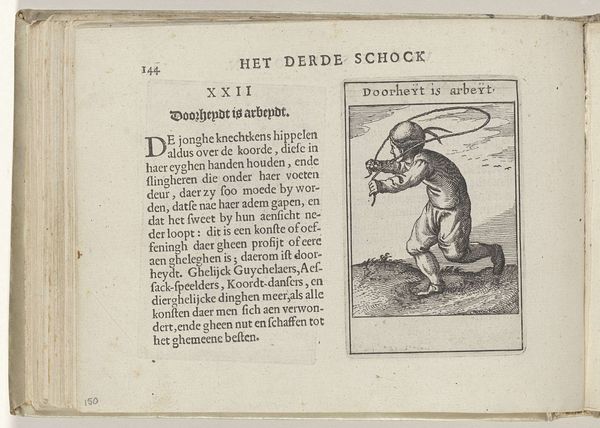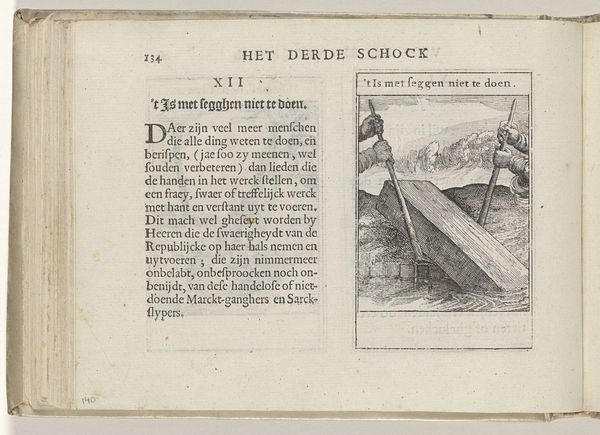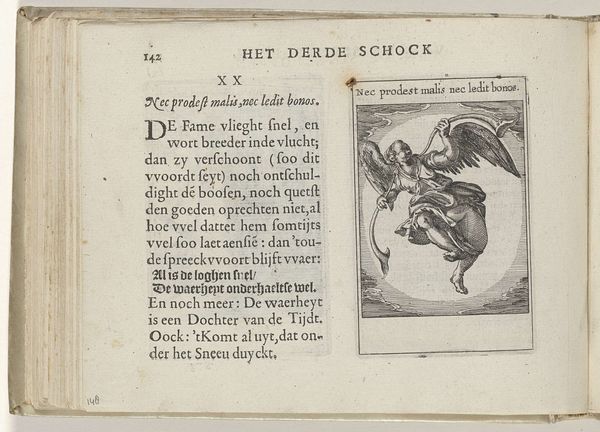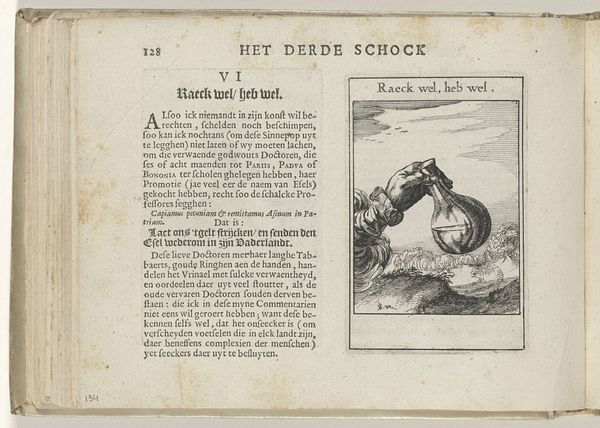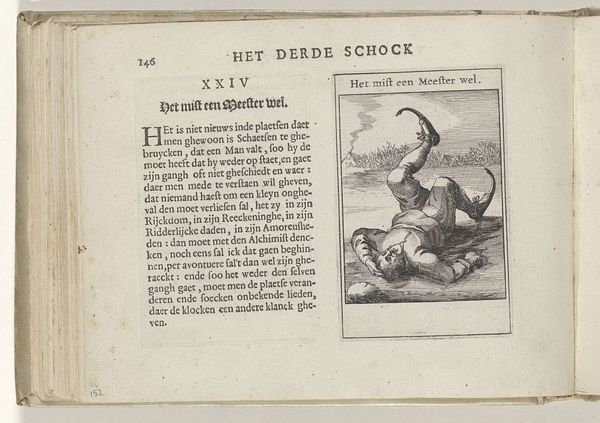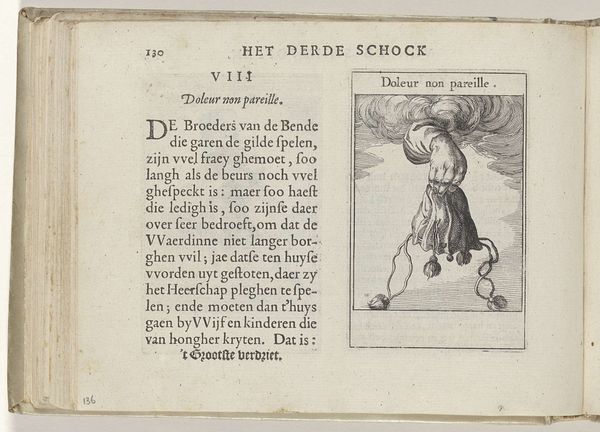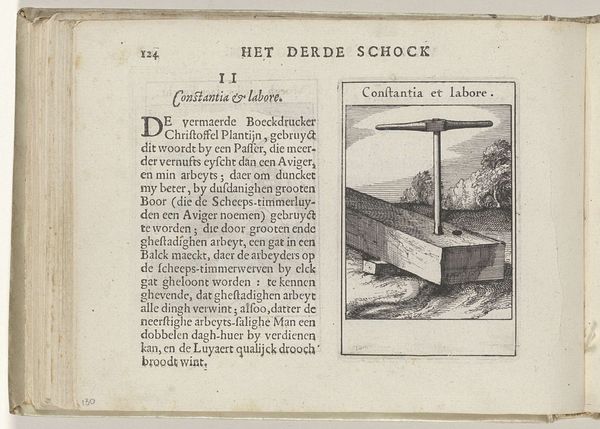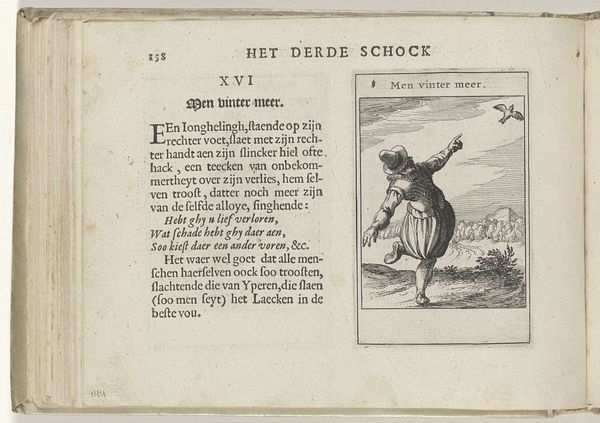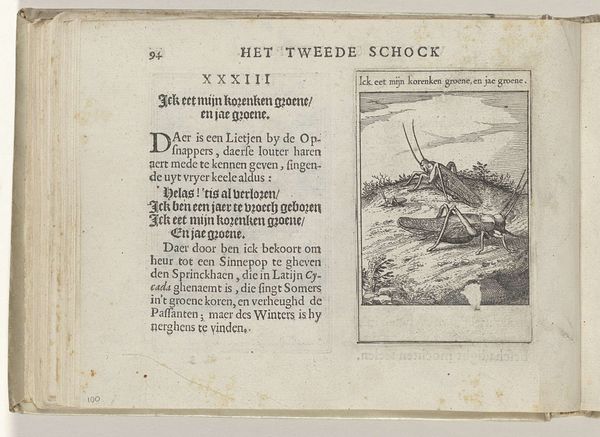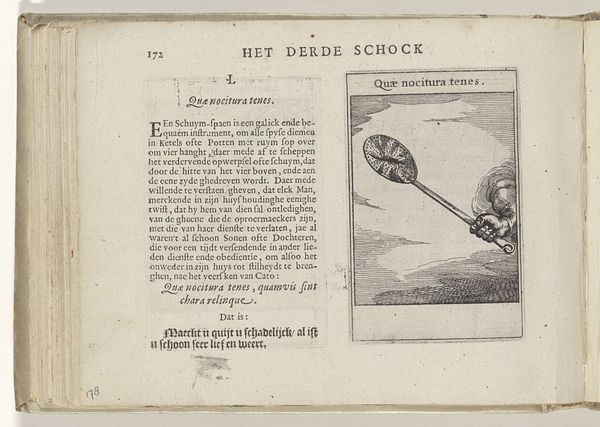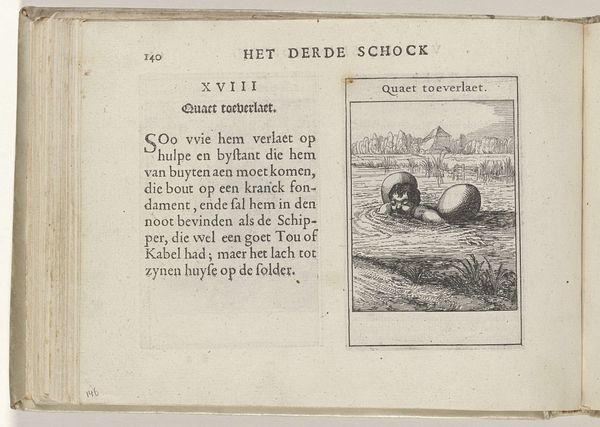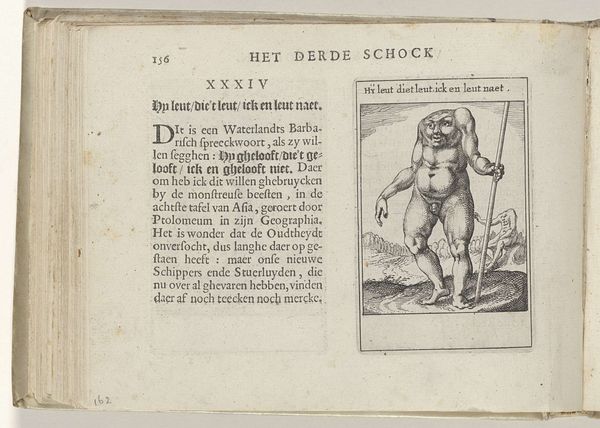
print, paper, engraving
#
baroque
#
dutch-golden-age
#
ink paper printed
# print
#
figuration
#
paper
#
history-painting
#
engraving
Dimensions: height 137 mm, width 188 mm, height 95 mm, width 60 mm
Copyright: Rijks Museum: Open Domain
Curator: Welcome. Before us is “LX Dum vixit, vixit bene,” an engraving on paper dating back to 1614, the creation of Roemer Visscher. It currently resides in the Rijksmuseum. Editor: Immediately, the imagery strikes me as bleak. A draped coffin under a minimalist sky… It evokes a stark view of mortality. Curator: Precisely. Visscher uses this piece to reflect on the complexities of death and inheritance in the Dutch Golden Age. The engraving shows a coffin with keys and a document labeled "Beneficie van Inventaris," pointing to the practice of limiting one's liability for the debts of the deceased. Editor: So it’s about material responsibility then? The 'Beneficie van Inventaris', as a process, sounds rather coldly transactional. Curator: Indeed. It’s about navigating the social landscape surrounding death, specifically, anxieties around debt and the burden of legacy. One has to acknowledge the potential influence this social system has on the culture of the time. Editor: The stark black ink of the engraving certainly underscores the austerity of it all. What’s compelling is that Visscher uses this accessible medium—printmaking—to discuss such critical financial considerations. Curator: Consider the social and political currents present during the Baroque era. This engraving not only provides insight into death practices, but it critiques them through accessible imagery. Editor: Ultimately, Visscher seems to be examining how economic and legal mechanisms dictate our interactions with mortality itself. A rather bleak observation. Curator: True. A necessary consideration of social norms and financial matters intertwined with our own mortality and legacy. Editor: A somber commentary rendered practically through accessible materials. An image made from paper, and made accessible for all to see and consider.
Comments
No comments
Be the first to comment and join the conversation on the ultimate creative platform.
